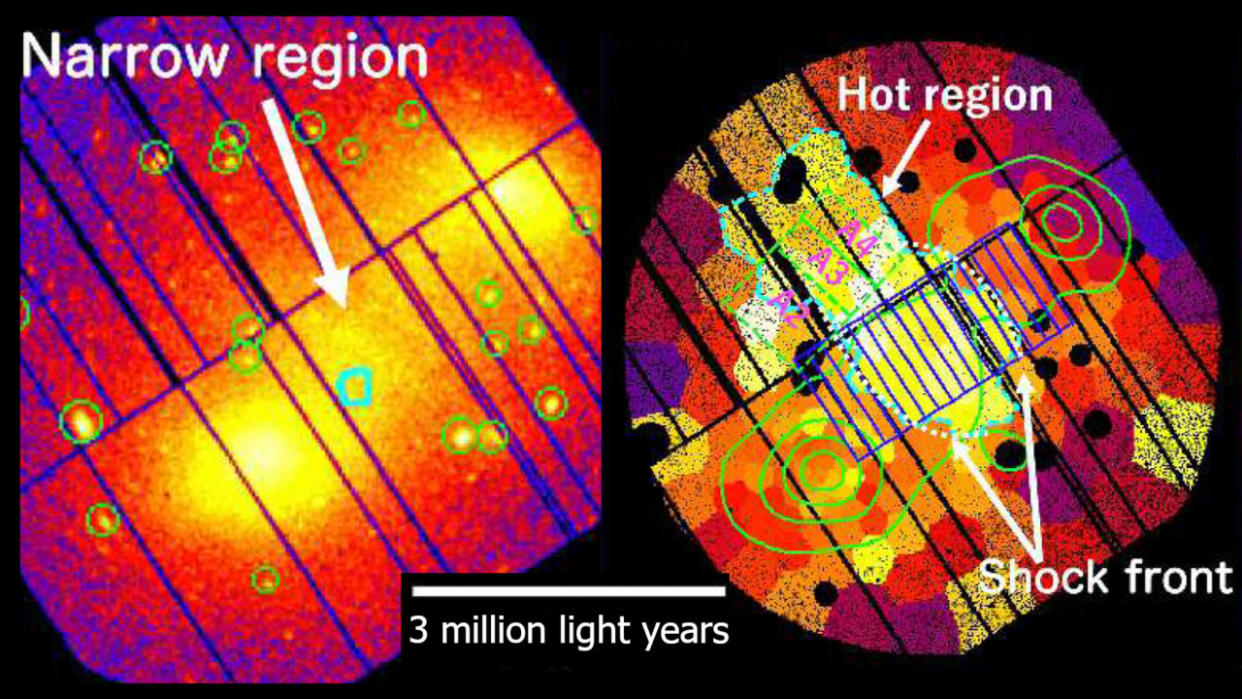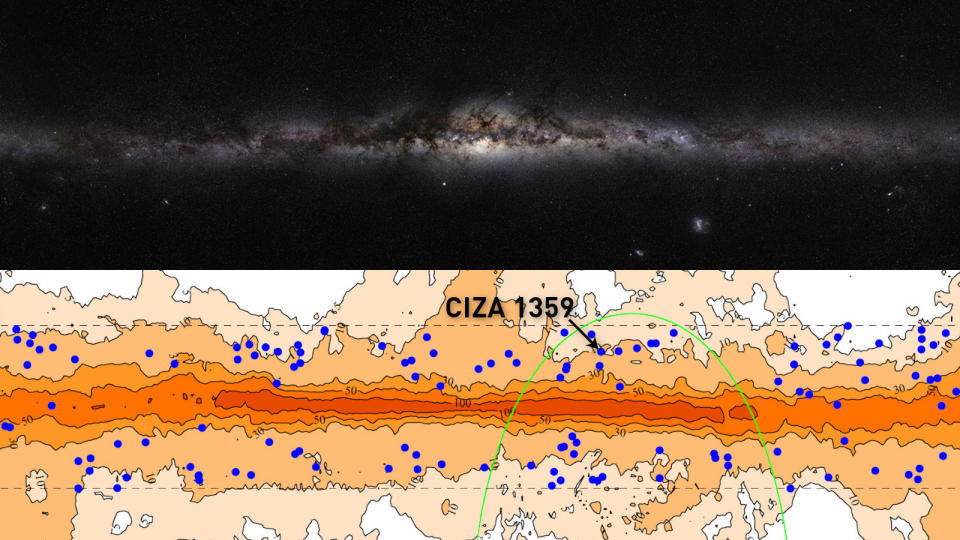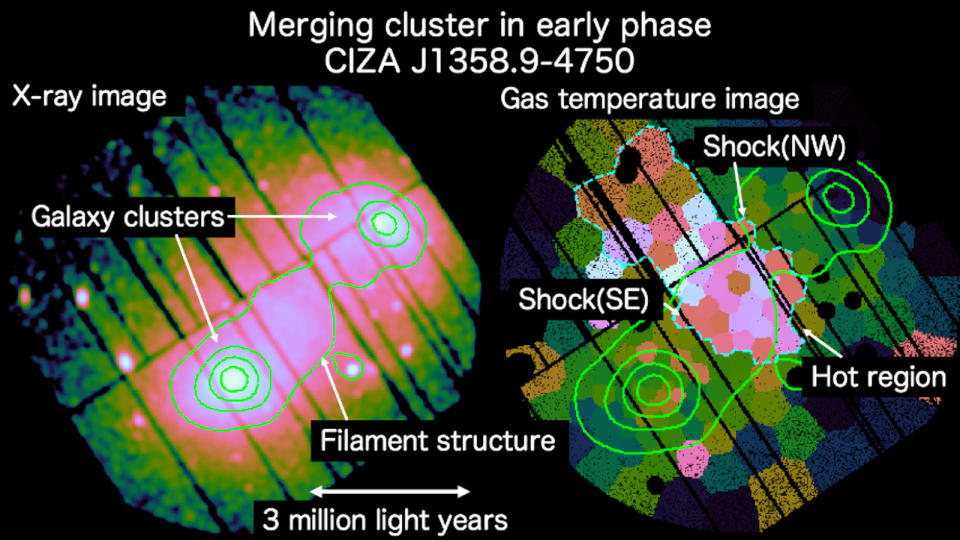Astronomers discover the biggest shockwaves in the known universe

A team of astronomers has identified immense shockwaves radiating out from a massive collision in space as the biggest in the known universe.
Hiding behind the dust and gas of our Milky Way galaxy is a pair of galaxy clusters, called CIZA J1358.9-4750, that are in the early stages of merging together.

A map of the galaxy clusters found by the Clusters in the Zone of Avoidance (CIZA) survey has been centred with the galactic core and matched up with a panoramic view of the Milky Way. The location of merging galaxy clusters CIZA J1358.9-4750 (CIZA 1359) is indicated by an arrow. The green arch denotes a region of the map that is best viewed from the southern hemisphere. Credits: Milky Way panorama - ESO/S. Brunier. CIZA map - D.D. Kocevski et al., 2003
CIZA 1359 is located around 1 billion light years away in what astronomers call the Zone of Avoidance — a region of space beyond our galaxy that most telescopes avoid due to the obscuring light, gas, and dust of the Milky Way.
However, x-ray telescopes can detect high-energy events even though the core of our galaxy. In fact, Japan's Suzaku x-ray astronomy satellite (deactivated since 2015) and the European Space Agency's XMM-Newton x-ray astronomy satellite (still operating after 23 years) have both collected observations of CIZA 1359 over the years.
By combining these observations, a team of researchers led by Kazuhiro Nakazawa and doctoral student Yuki Omiya, both from Nagoya University's Kobayashi-Maskawa Institute for the Origin of Particles and the Universe (KMI), closely examined these merging galaxy clusters.
Through their research, the researchers confirmed an intensely hot region of space located between the two that is roughly 20 million degrees hotter than the cores of both clusters. This zone is the result of two immense shockwaves, measured at around 3 million light years square, that are travelling through the material of the clusters at around 1,500 kilometres per second.

On the left, an X-ray image of CIZA J1359 points out the locations of the two galaxy clusters and the filament structure currently joining the two as they merge. On the right, a detailed model isolates the extremely hot region between the two clusters and the shockwaves generated by the collision. Credit: Yuki Omiya, et al., 2023/KMI
"By conducting a detailed reanalysis of past data in this study, we have successfully discovered the existence of two 'newborn giant shock waves' in merging clusters," said Omiya. "These shock waves have a width and depth 30 times larger than the diameter of our Milky Way galaxy, and this is the first time they have been observed."
In a blog post discussing the research on the KMI website, the team called this "the largest energy-release event in the universe."
Since the merger of these galaxy clusters is in such an early stage, this gave the researchers a good idea of the initial shape of the pair. That made it possible to compute the kinetic energy of one of these shock waves.
Taking the size and speed of the 'northwest' shockwave (the one pushing into the galaxy cluster on the right in the above images), they estimated its kinetic energy at "one billion times the energy consumed by the sun in a year, all released within just one second."
From here, the hope is that observations from new, more advanced radio telescopes, and new x-ray observatories such as Japan's XRISM mission, will help reveal more details of CIZA 1359 and deepen the researchers' understanding of the processes involved in the merging of galaxy clusters.
(Thumbnail image courtesy Yuki Omiya, et al., 2023)


